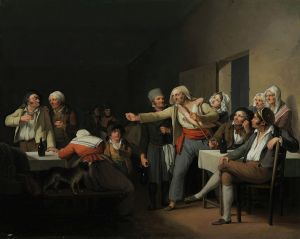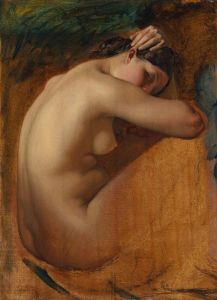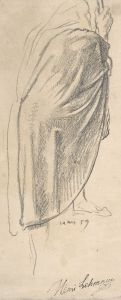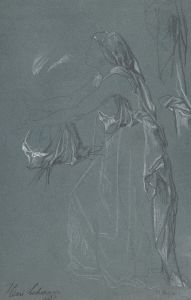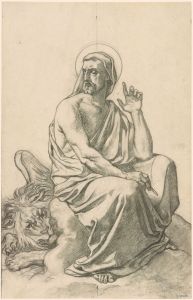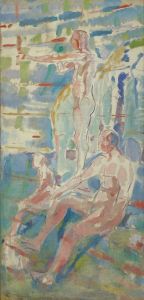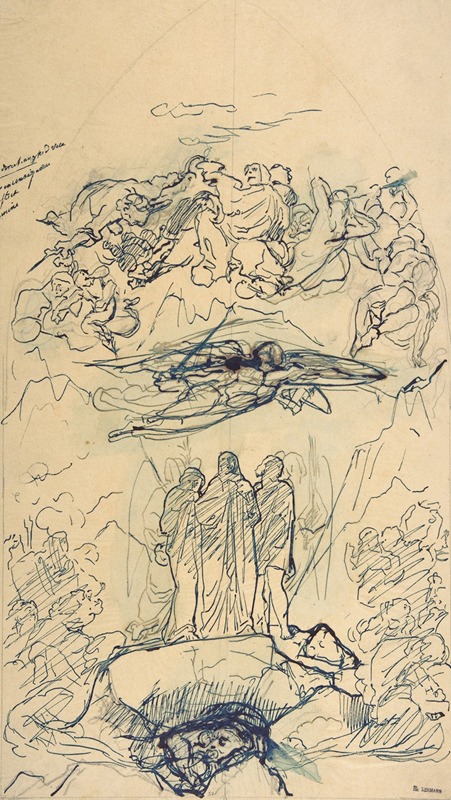
Composition Study with Three Figures Standing on a Rock
A hand-painted replica of Henri Lehmann’s masterpiece Composition Study with Three Figures Standing on a Rock, meticulously crafted by professional artists to capture the true essence of the original. Each piece is created with museum-quality canvas and rare mineral pigments, carefully painted by experienced artists with delicate brushstrokes and rich, layered colors to perfectly recreate the texture of the original artwork. Unlike machine-printed reproductions, this hand-painted version brings the painting to life, infused with the artist’s emotions and skill in every stroke. Whether for personal collection or home decoration, it instantly elevates the artistic atmosphere of any space.
Henri Lehmann's "Composition Study with Three Figures Standing on a Rock" is a notable work by the German-born French painter, who was active during the 19th century. Lehmann, born in 1814 in Kiel, Germany, was a prominent figure in the art world, particularly known for his portraiture and historical scenes. He studied under the influential painter Jean-Auguste-Dominique Ingres, which significantly shaped his artistic style, characterized by a neoclassical approach and meticulous attention to detail.
Lehmann moved to Paris in 1831, where he became part of the vibrant art scene and established himself as a respected artist. His works often reflect the academic style of the period, focusing on clarity, harmony, and idealized beauty. Lehmann's connection with Ingres and his academic training are evident in his compositions, which often feature classical themes and figures.
"Composition Study with Three Figures Standing on a Rock" exemplifies Lehmann's skill in composition and his ability to convey narrative through the arrangement of figures. While specific details about this particular work are limited, it is consistent with Lehmann's oeuvre, which frequently includes studies and sketches that explore human form and interaction. Such studies were common practice for artists of the time, serving as preparatory works for larger compositions or as exercises in mastering the depiction of the human body.
The painting likely features three figures, possibly in a mythological or allegorical context, standing on a rock. This setting suggests a narrative or symbolic significance, a common trait in Lehmann's work, where figures are often placed in settings that enhance the story or theme being depicted. The use of a rock as a platform for the figures could imply a sense of stability, permanence, or elevation, aligning with classical themes of heroism or divine presence.
Lehmann's technique would have involved careful planning and execution, with an emphasis on line and form, reflecting his academic background. His studies often reveal his interest in the interplay of light and shadow, as well as the anatomical precision of his figures. This attention to detail and form is a hallmark of Lehmann's work, demonstrating his commitment to the principles of neoclassicism and his dedication to the craft of painting.
Throughout his career, Lehmann received numerous accolades and held prestigious positions, including a professorship at the École des Beaux-Arts in Paris. His influence extended to his students, and his works were exhibited widely, contributing to his reputation as a leading artist of his time. Despite the lack of extensive documentation on "Composition Study with Three Figures Standing on a Rock," the painting remains an example of Lehmann's artistic legacy and his contribution to 19th-century art.
In summary, while specific information about "Composition Study with Three Figures Standing on a Rock" is sparse, the work can be appreciated within the broader context of Henri Lehmann's career and artistic achievements. His dedication to classical ideals and his skillful execution of form and composition continue to be recognized and studied by art historians and enthusiasts alike.







